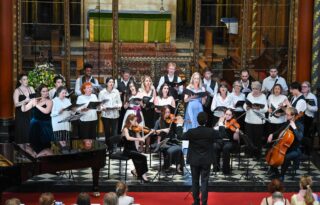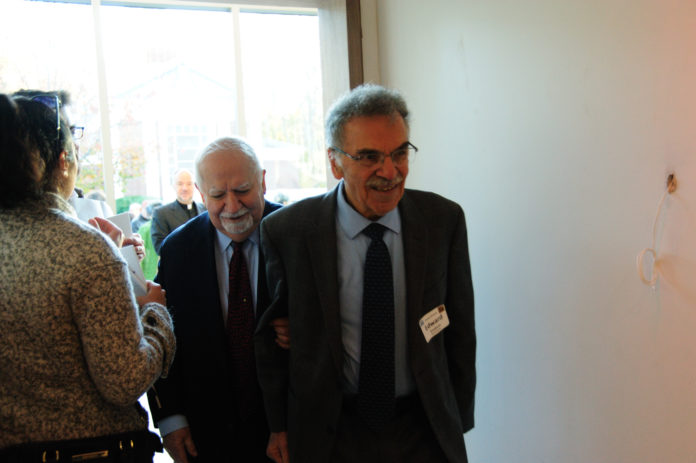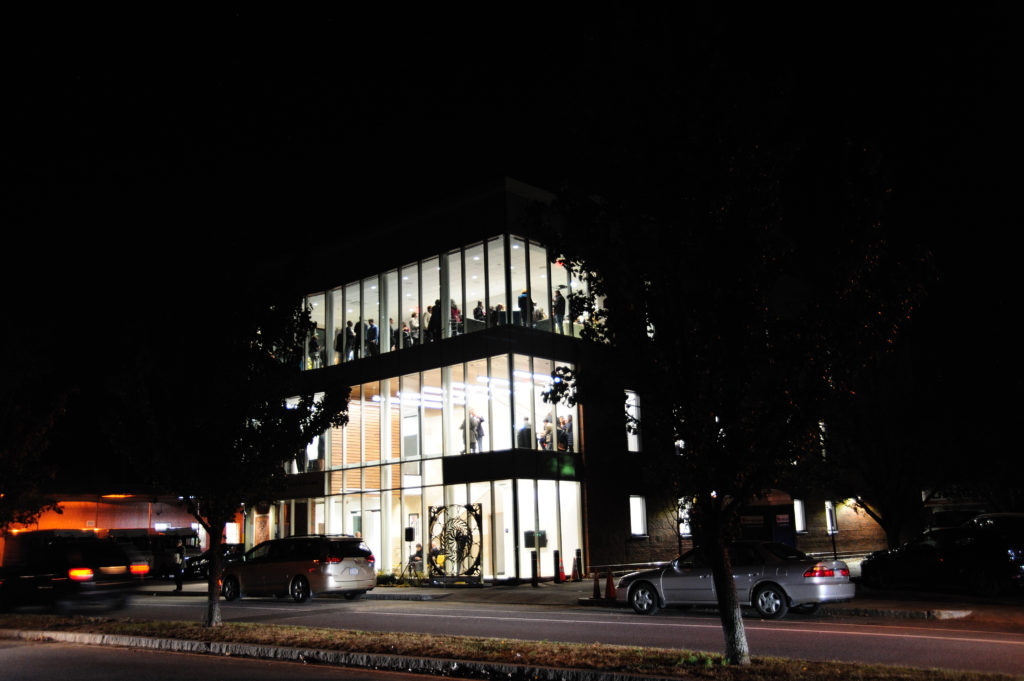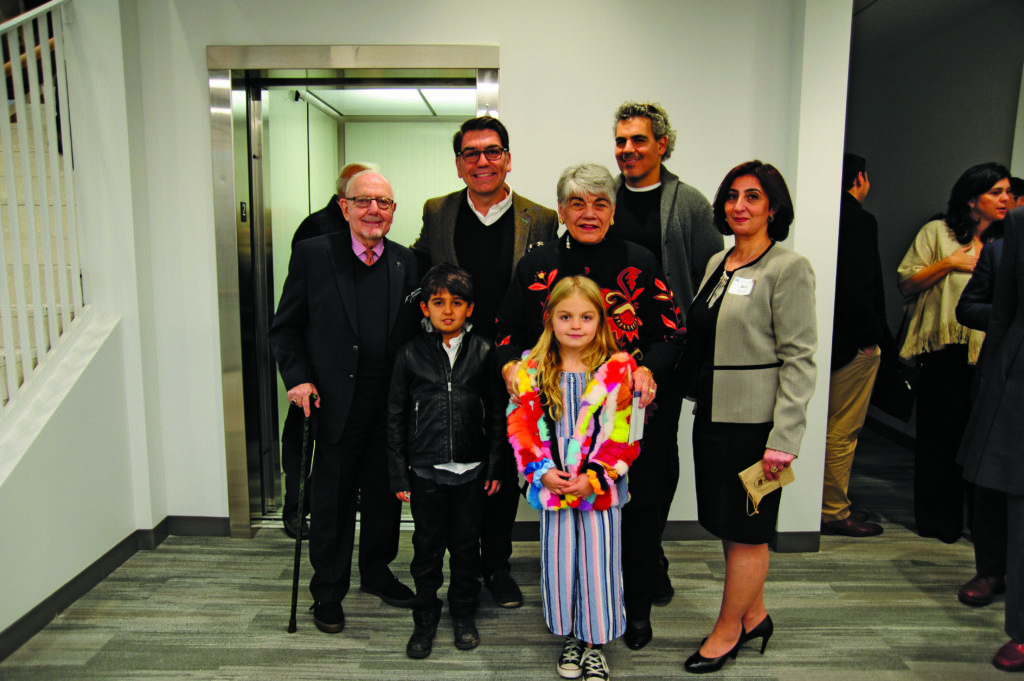BELMONT, Mass. — On the blustery afternoon of Friday, November 1, the National Association for Armenian Studies and Research (NAASR) finally unveiled its airy and sparkly new building, erected on the site of its previous center.
Hundreds of well-wishers and supporters gathered outside for the opening program, which included comments from the person for whom the building is named, Dr. Vartan Gregorian.
Yervant Chekijian, chairman of the NAASR board, got the program started. He highlighted some of the building’s new features, including the main door, crafted by an artisan in Armenia.
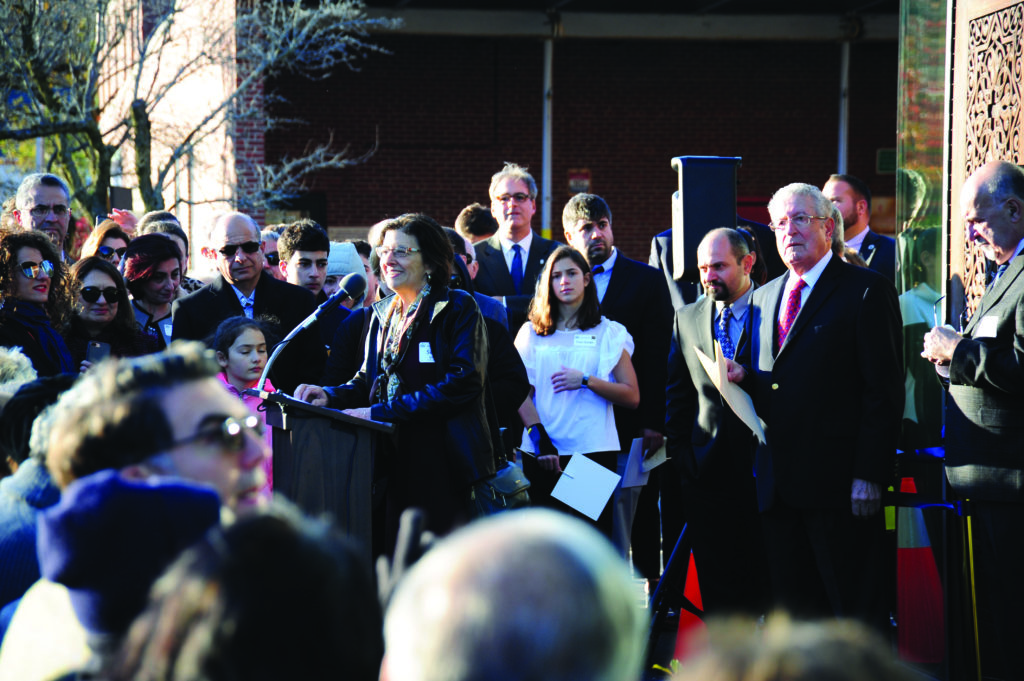
Ara Krafian, chairman and president of the firm SMMA, which provided the architectural and engineering services for the new building, spoke next. The new 15,000-square-foot building, he said, came about as a result of the “courageous Board of Trustees and relentless Yervant,” adding special thanks to Executive Director Sarah Ignatius and Director of Academic Affairs Marc Mamigonian.
The new building, he said, is much more efficient, larger and full of natural light.
In addition, the floor-to-ceiling glass walls on the third floor have etchings of traditional Armenian design.
